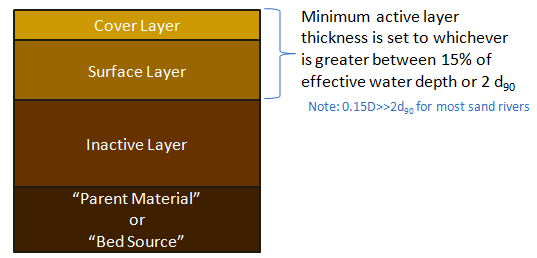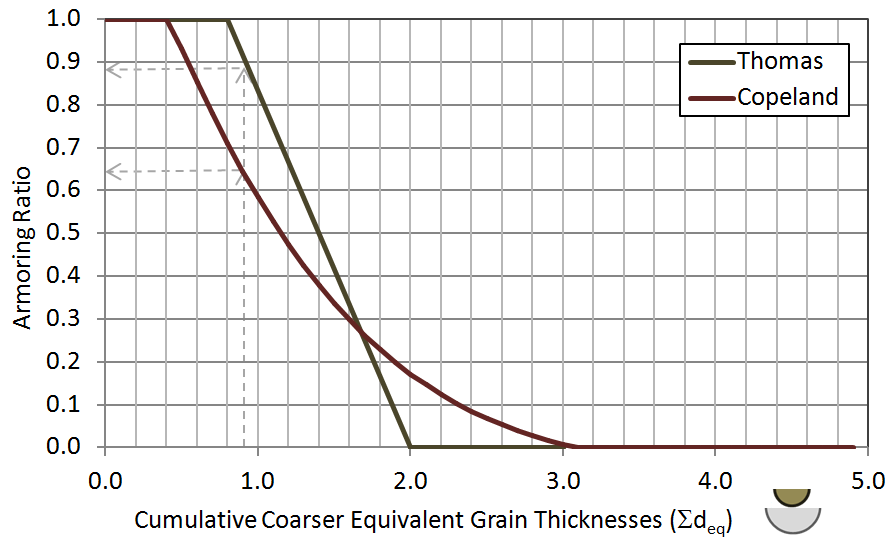The Thomas method was developed for coarse, well graded systems. It was initially developed for the Snake River, then generalized for other systems. But it tended to over predict armoring, and, therefore, under predict erosion on finer systems (USACE, 1993, Thomas, 2010). Copeland (1992) adjusted the method, to make it more applicable to sand beds. The Copeland method follows the Thomas method in concept and approach. It subdivides the active layer into cover and subsurface layers, allowing the gradation of the former to regulate erosion from the later. The Copeland method adds a "bed source" layer, but is still, practically, a three layer method, like the Thomas method. It computes an armor ratio based on the equivalent particle diameters of coarser grain classes. But the Copeland method changes some of the equations and assumptions, and generally allows more scour, making it popular for large, sand bed rivers.
There are three main differences between the Copeland and Thomas methods:
- The Copeland method doesn't compute active layer thickness with the equilibrium depth concept. Instead it starts at the maximum or 2 d90 or 15% of the water depth.

2. The Copleand method replaces the linear interpolation between 0.8<Σdeq< 2 (from the figure titled, "Armor ratio relationship used in the Thomas method" on previous page) with a polynomial:
AR = -0.026*(Σdeq)3+0.28*(Σdeq)2-1.07*(Σdeq)+1.40
This relationship has the same basic trend as the Thomas relationship but (Figure 2 20) starts armoring at a smaller Σdeq (0.4<Σdeq, following the Harrison observation) but not fully preventing subsurface erosion until Σdeq is much higher (Σdeq>4).
3. The cover layer is limited to a maximum thickness of 3d90. However, burial does not reset the cover layer.

The main differences between the Thomas and Copeland methods are summarized in the table below:
Table: Differences Between the Thomas and Copeland Armoring Methods.
Thomas (Ex 5) | Copeland (Ex 7) |
Active Layer (La) thickness based on Equilibrium Depth (Deq) | Active Layer (La) thickness based on 15% of Water Depth or 3d90. |
Linear Armor Ratio | Polynomial Armor Ratio. |
Armors more rapidly, ↓ erosion | Armors more gradually, ↑ erosion |